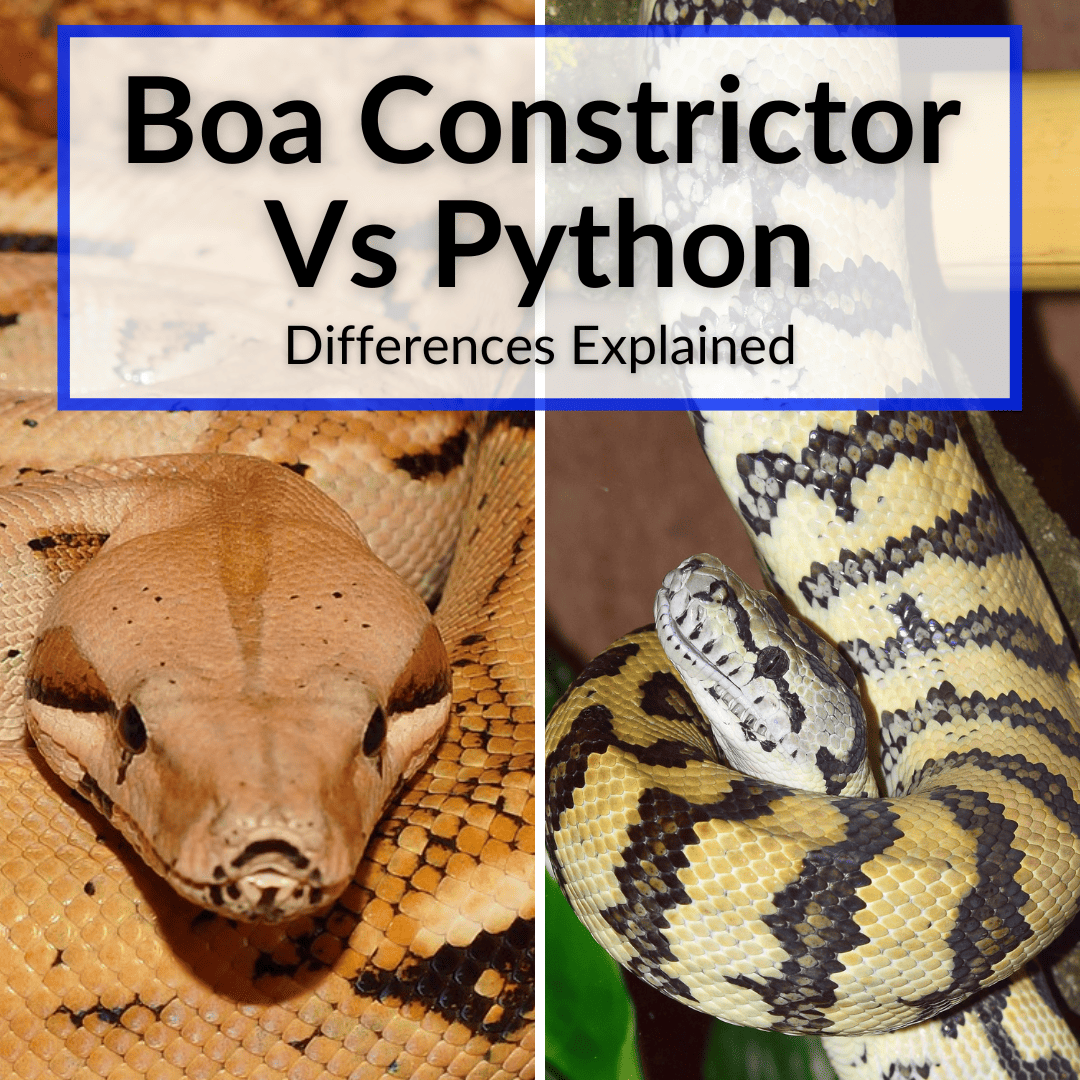
They are, perhaps, also two of the most feared.
But there is no good reason for that.
When you compare the boa constrictor vs python, a big similarity is their docile nature.
Most pythons and all boas are perfectly harmless.
What else do they have in common? And what are the main differences between boas and pythons? Keep reading to find out.
We will compare the two species in depth. We will also help you figure out which would make a better pet for you, if that is the reason for your interest in these snakes.
Table of Contents
Boa Constrictor Vs Python
We will begin our comparison of the python vs boa constrictor by looking at each snake individually, before comparing them directly. Note that there are many different species of both boas and pythons.
We will focus on both types in general. There are plenty of other articles on this site that look more closely at individual species of pythons or boas, like our comparison of the boa imperator and the boa constrictor.
The Boa Constrictor
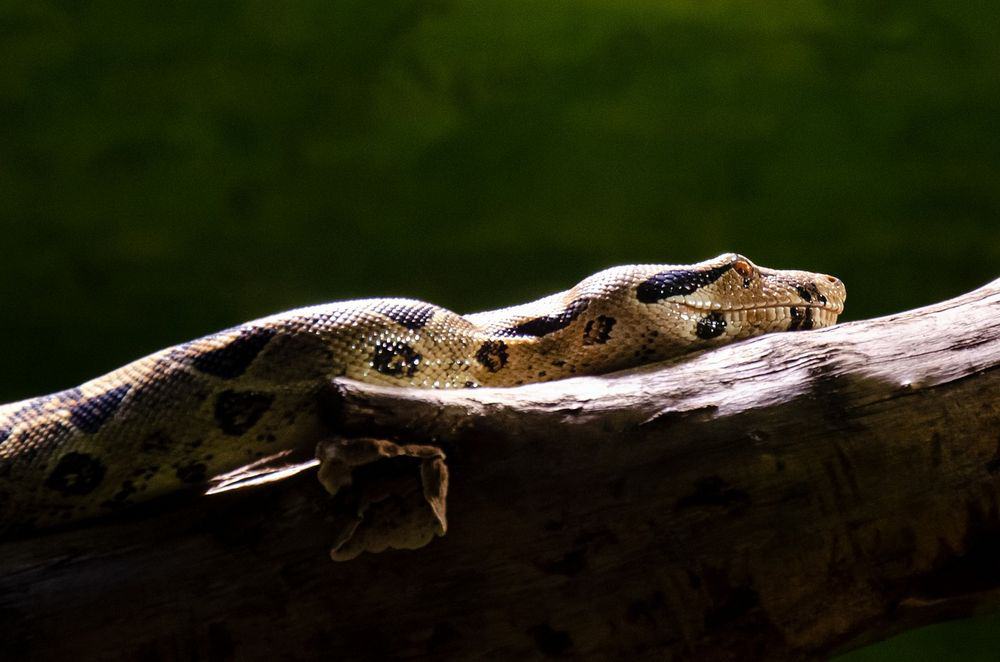
The boa constrictor is a prey-crushing reptile found in Central and South America. Like all reptiles, boa constrictors are vertebrates with a backbone.
They have scaly skin and come in various colors (tan, green, brown, yellow, or red) and patterns (oval, diamond, zigzag, or circles) depending on their habitat. These colors and patterns help them camouflage and hide in their surroundings.
Boas have large, thick, and muscular bodies. They measure between 8 and 13 feet (2.4 and 4 m) and weigh almost 100 pounds (45 kg). Their heads are triangular and they have dark stripes around their eyes. They use their forked tongues to sniff the air and detect prey.
These cold-blooded snakes need help from their environment to regulate their body temperatures. They do not slither like other snakes. Instead, they move slowly forward in a straight line. Learn what boa constrictors eat in this article.
The Python
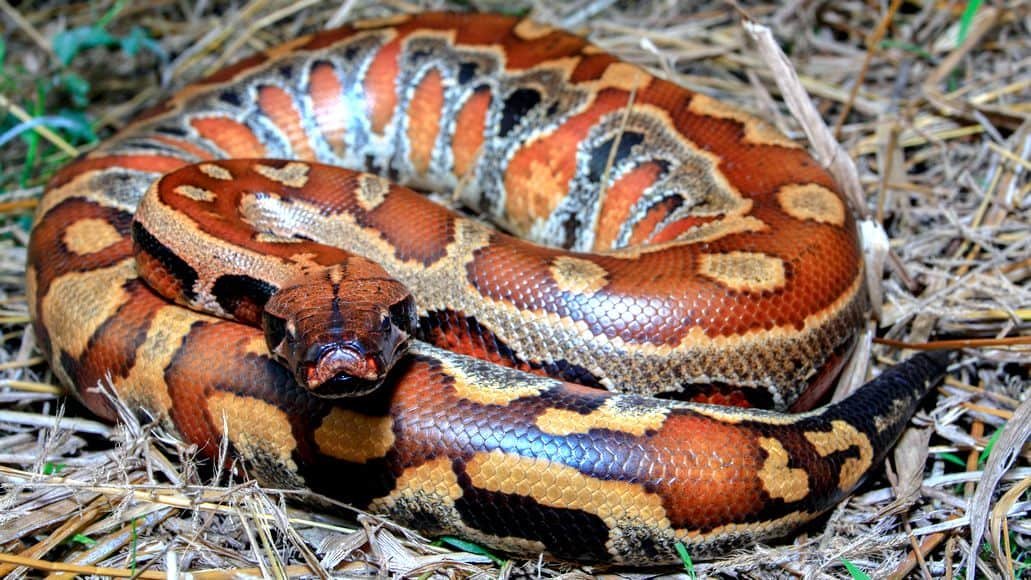
Pythons are found in Asia, Africa, and Australia. There are approximately 30 different species of pythons across these three continents. They prefer warm climates and live in a variety of habitats like marshes, rainforests, dry-rocky areas, grassy plains, etc.
Some pythons are arboreal (tree-dwelling), while others are fossorial (living underground).
Pythons eat birds, rodents, monkeys, lizards, and other creatures. Large pythons can also eat pigs and gazelles. Pythons living near villages and towns are also known to eat dogs and cats. There are even reports of pythons eating humans.
Some pythons reach lengths of 21 to 33 feet (6.4 to 10 meters)! These large species of pythons are quite dangerous. They also come in various color patterns that help them camouflage and blend in with their surroundings.
Differences Between Boas And Pythons
The following are the big differences between boa and python species of snakes.
Family
Boa constrictors belong to the family of snakes known as Boidae. There are many different types of boa constrictors, such as the red-tailed boa, rosy boa, Colombian boa, etc.
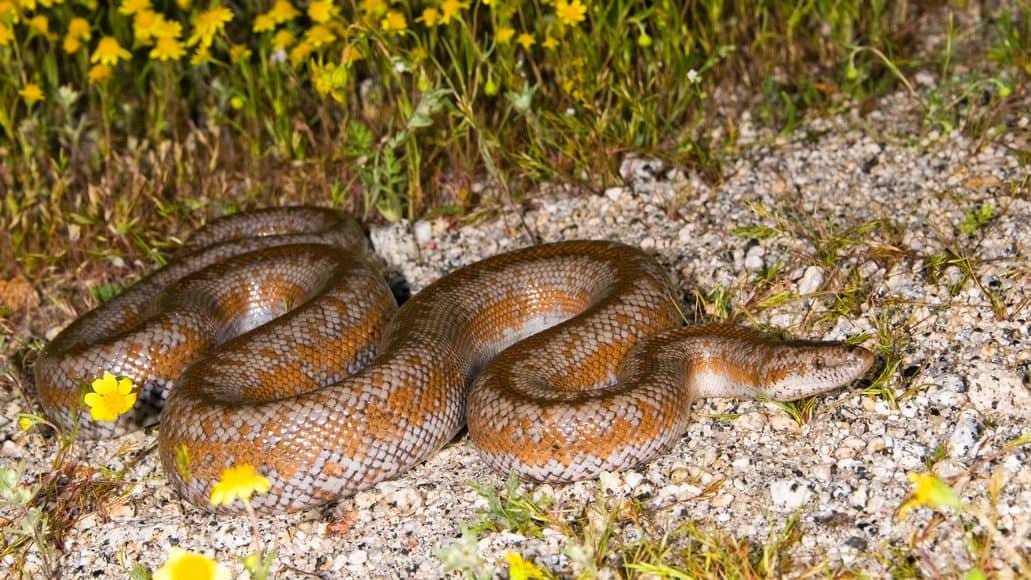
Pythons are a part of the Pythonidae family. Different types of pythons include Burmese pythons, reticulated pythons, and ball pythons.
Habitat
Pythons are mainly found in Asia, Africa, and Australia. They prefer warm habitats and can be found in marshes, forests, jungles, and grasslands. Boas are native to Central and South America, and they live in tropical rainforests, semi-deserts, and savannas.
Physical Features
Boa constrictors are robust, muscular snakes that can reach a length of 8 to 13 feet. They come in various colors and patterns. Boas have distinctive patterns like saddles and blotches. Some boas, like the red-tailed boas, have reddish-brown tails.
Pythons come in various sizes, depending on their type. Ball pythons are smaller, which is why they make great pets.
Some pythons, like Burmese and reticulated pythons, can reach impressive lengths of over 30 feet. Pythons also come in various attractive colors, with deep brown or gold patterns.
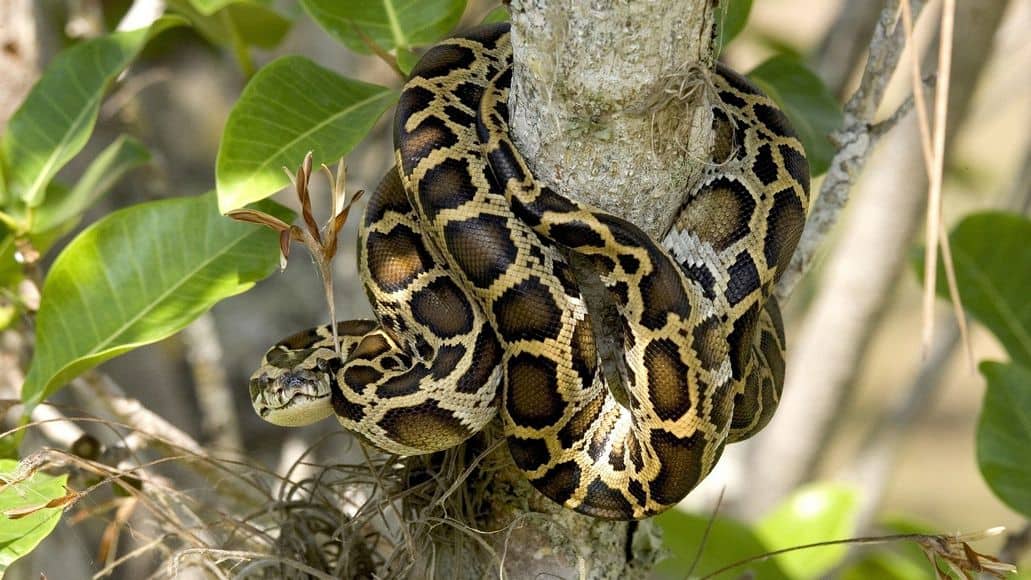
Pythons have more bones in their heads than boas. They also have a pair of upper jaws with teeth, which is not the case for boas.
Reproduction
Most pythons are oviparous, meaning that they lay eggs to give birth to their young ones. Boas are viviparous. They give birth to live young babies and do not lay eggs.
Danger To Humans
Generally, boa constrictors are not considered dangerous to humans. They are non-venomous and rarely pose a threat unless mishandled or provoked.
While most pythons are non-venomous, larger species like reticulated pythons and Burmese pythons can be potentially dangerous due to their size and strength, especially if they feel threatened. Pythons are known to kill humans and can pose a much bigger danger to our best friends: pets like cats and dogs.
Similarities Between Boa Constrictors And Pythons
Now let’s take a look at the major similarities between the python and boa snake species.
Similar Appearance
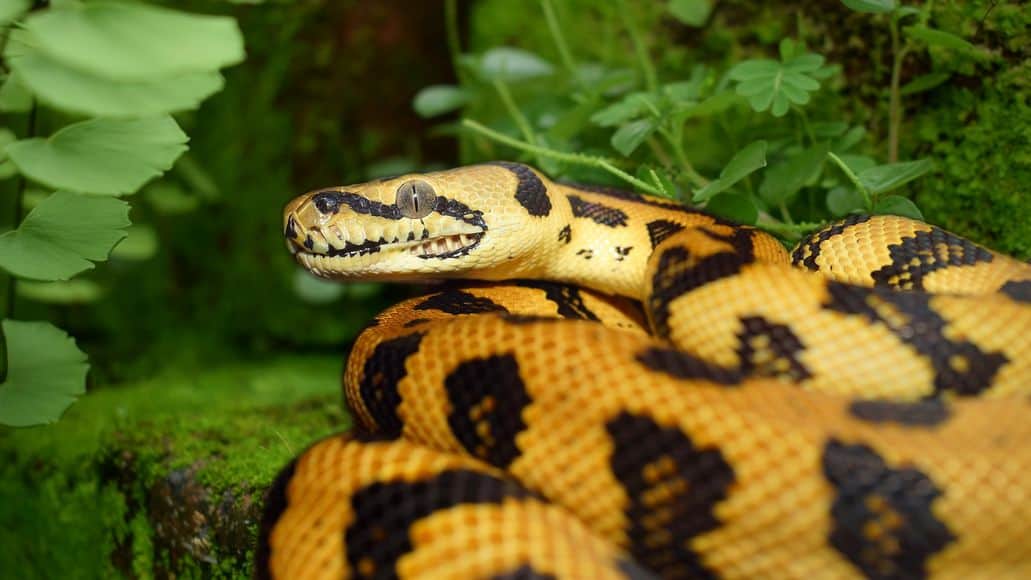
Both species of snakes had the same ancestor 60 million years ago. This is why they are quite similar in appearance.
Both snake species come in various colors and patterns that help them camouflage in their habitats. Researchers have also found that tree-dwelling pythons are very similar to tree-dwelling boas and burrowing boas are very similar to burrowing pythons.
Widespread And Varied Habitats
Both species of snakes are found in varied habitats and climates. They are both adept at navigating different ecological niches. Each species has varieties that are arboreal, terrestrial, semi-fossorial, or fossorial. Some even live semi-aquatic lives and some are skilled at living in multiple environments.
Diet And Dietary Habits
Pythons and boa constrictors both constrict and squeeze their prey until it suffocates before swallowing it whole. Both species eat rodents, birds, frogs, lizards, and other small and big animals.
Advantages Of Boa Constrictors As Pets
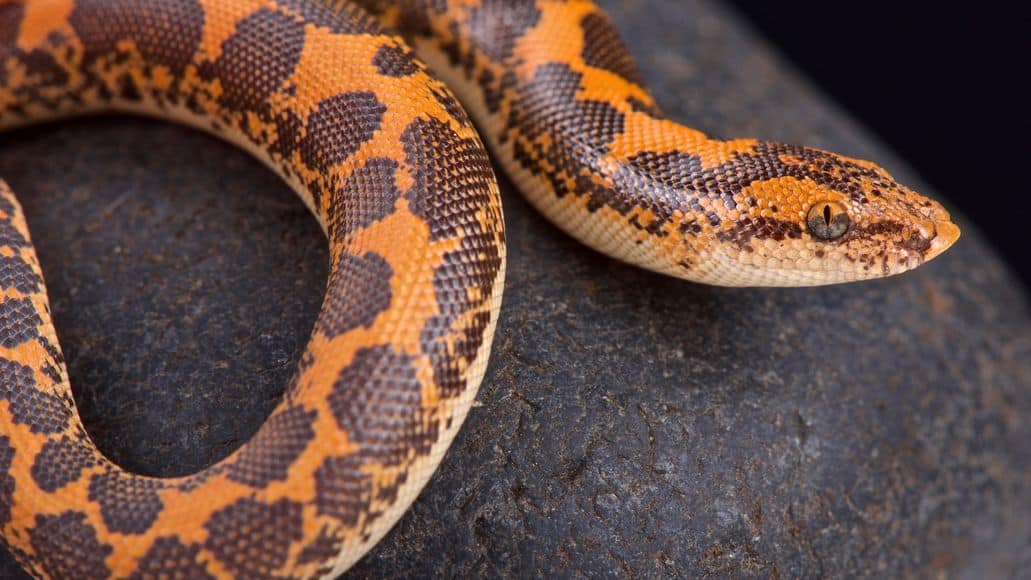
If you are trying to decide between these two species as a pet, here are the main reasons to choose a boa over a python.
Beautiful Morphs
Breeders have created beautiful boa constrictor morphs, so you get to choose from a wide range of colors and patterns. You can find boas in red, orange, yellow, black, white, gray, and green colors.
Docile Temperament
Boas have a great temperament. Even though they reach a length of over 4 feet, they are fairly easy to handle. They usually do not strike, hiss, or bite. Unless threatened, of course.
Their docile temperament makes these nonvenomous snakes great pets for kids and inexperienced snake-keepers. At least some boa species. Others are not ideal for beginners. We have an article that lists the best types of boas for pets.
Low-Maintenance
Boa constrictors are hardy snakes that can adjust to a variety of environments. Thus, their owners have the option of choosing an arboreal or terrestrial setup in their enclosures. Many snake varieties do not offer such housing options to snake enthusiasts.
Long Lifespans
Boa constrictors live for nearly 20 to 25 years in captivity, with proper care. This makes them a great alternative to other pets like hamsters, dogs, and cats, which typically have short lifespans.
Advantages Of Pythons As Pets
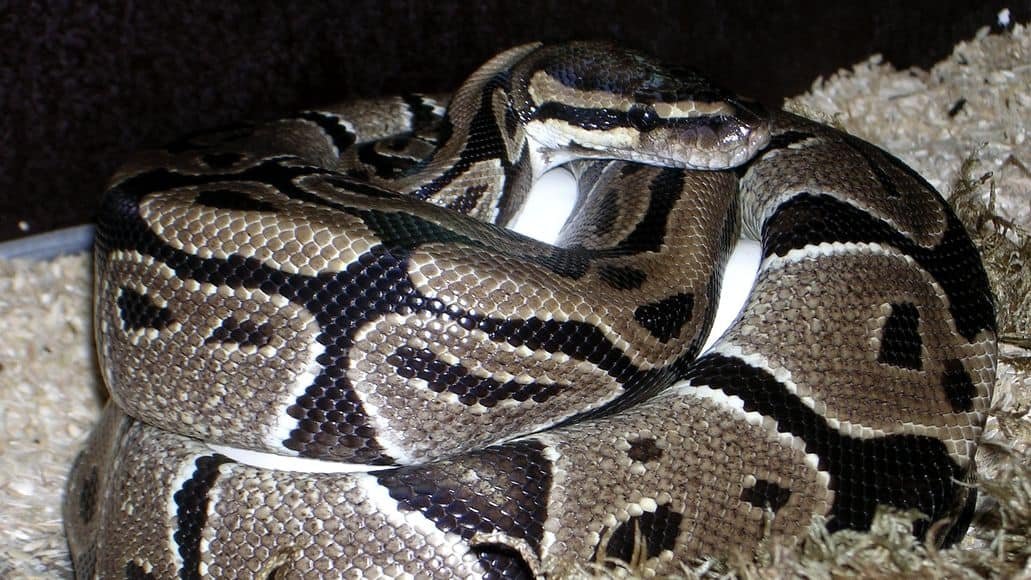
There are also a number of good reasons to get a python over a boa. In the end, it comes down to your personal preference.
Low-Maintenance
Small python species like ball pythons are fairly low-maintenance. They don’t need special baths or walks. Adult ball pythons only need to be fed once every two weeks. This makes them easy to care for, even for beginners to snake-husbandry.
Note that ball pythons need specific humidity and temperature levels, so you still have to invest in heaters, thermometers, hygrometers, etc.
Ideal For Small Spaces
Smaller python species do not need too much space. They are ideal for apartment dwellers. Being small in size also keeps them easy to handle.
Attractive Colors And Morphs
Ball python breeders have also created beautiful morphs in attractive colors. This makes ball pythons unique and interesting pets.
Easy To Handle
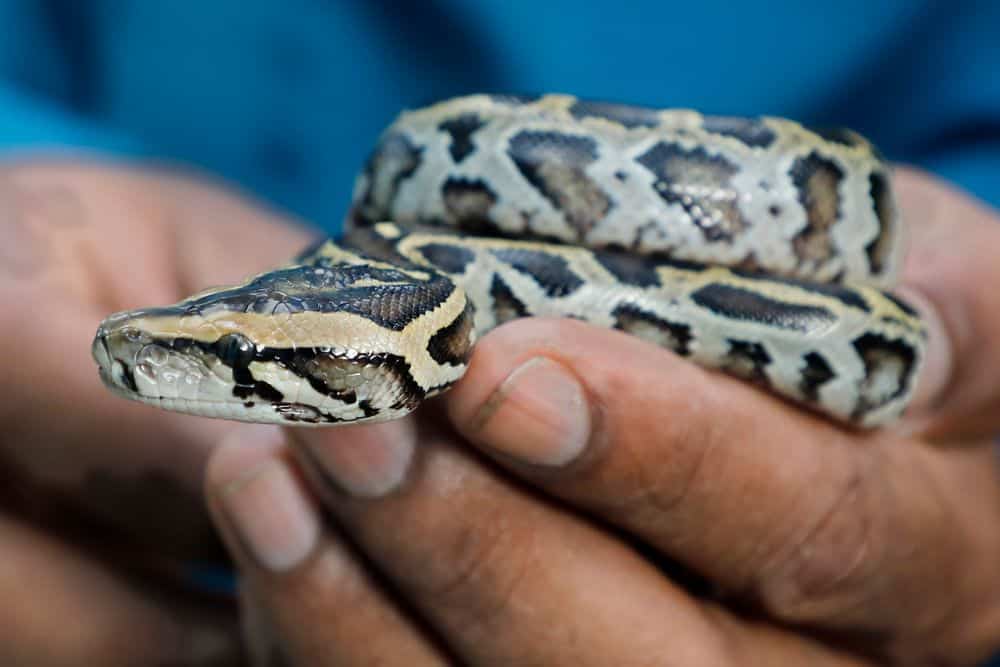
Ball pythons are easily one of the calmest snake species. They curl up in a ball all the time, which is what gives them their name. This makes them a great pet for beginners to snake-keeping, as well as for kids.
Long-Lived
Like boas, ball pythons can live up to 20 to 30 years. This long lifespan, combined with their straightforward maintenance, ensures that you have an easy-to-handle, docile, and attractive pet as a companion for years to come.
Difference Between Boas And Pythons: Final Thoughts
The boa constrictor and the python have a lot in common. Both snakes generally share a docile nature, making them basically harmless to humans. With the exception of some of the larger pythons, of course.
Despite their similarities, there are also distinct differences between the boa constrictor vs python, including their family, habitat, physical features, reproduction, and potential danger to humans.
When considering them as pets, both boa constrictors and pythons have their advantages. In the end, which one makes the better pet for you will come down to your individual situation, needs, and preferences. You should also check out our article on the difference between ball pythons and boa constrictors.
Leave a Reply